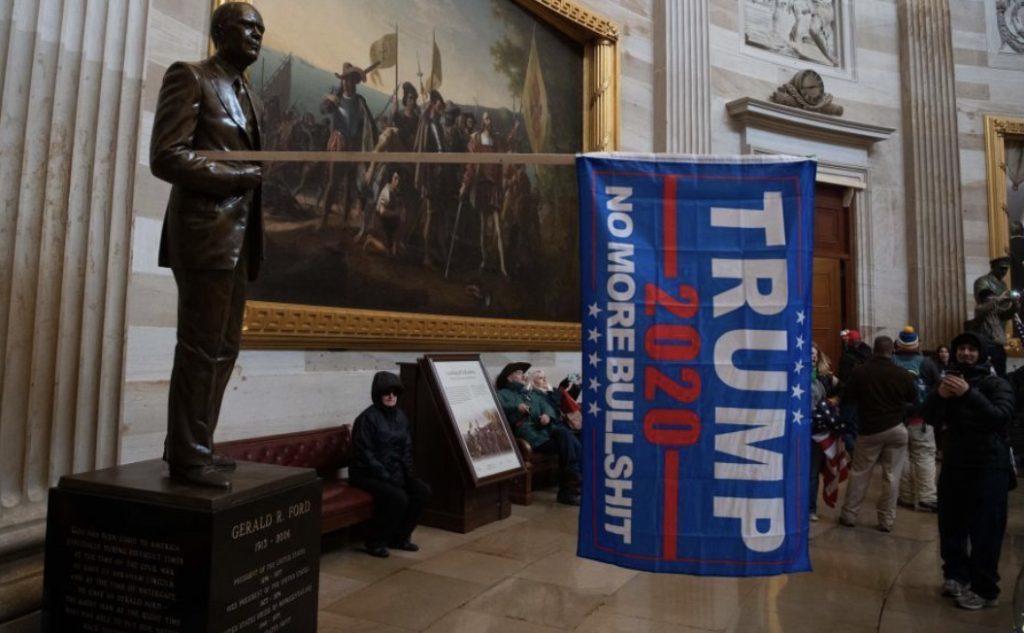Fiona Riley ’23
Among the many Americans grieving the outcomes of the January 6th Capitol Building riots were those who feared for the historic art in the building. For many watching the news that Wednesday, images of rioters crammed inside of the building near precious pieces of art and individuals grabbing at assorted items was a disturbing sight.
Robert Maier, AP Art History teacher, states, “The Capitol carries with it so much symbolism, both as the seat of the US government and a museum of artifacts from US history. This is why it was targeted in the attack, and one of the reasons why it was so painful to watch the attack, destruction, and deaths unfold in real-time.”

Although the majority of the art and the building itself remained unharmed, the rioters did damage several pieces. One of these was a marble bust of Zachary Taylor, 12th President of the United States, which was sprayed with a blood-like substance. Additionally, a large picture frame was found lying on the ground empty, and although the exact work that was within it is unknown, the picture may have been stolen. Footage from the riots showed an individual stuffing a photograph of the Dalai Lama into his bag.
Another video depicted someone ripping a scroll engraved with Chinese characters.
These stolen and damaged items were a tragic sight for art historians and art student such as Erika Kramer ‘22 who remarks how, “It is upsetting to see artwork destroyed without repercussions. This was something that was so avoidable.”
Although not physically damaged, a statue of President Gerald Ford was found wearing a MAGA hat and holding a “Trump 2020” flag. Josephine Buccini ‘21 believes that, as a historically significant piece, this degradation was morally wrong since it disrespected the former president’s legacy, saying, “This riot didn’t belong to Ford or any other president; it was all Trump’s.”
Fortunately, Maier notes that, “Many major paintings by John Trumbull (an ancestor of recently retired Episcopal Academy teacher Rob Trumbull) escaped with just pepper spray residue.” The majority of the art remains unharmed. “Beyond the human trauma, the Capitol Building and its artifacts will require significant repair, but it sounds like it could have been worse,” affirms Maier.
Art student William Sargent ‘22 says that, “Although the majority of the art in the Capitol escaped relatively unscathed, the Capitol Building, an enormous artwork that represents the unity of our country, was violated. I feel that although the insurrection may not have left lasting physical marks, the sanctity of our Capitol Building has been attacked, and so has our unity as a county.”
Maier also makes an interesting observation regarding art and the events, noting that, “Ironically, the tools, weapons, and flags used in the attack have now become the latest artifacts in the history of the Capitol, and they will need to be preserved as primary sources for future generations.”